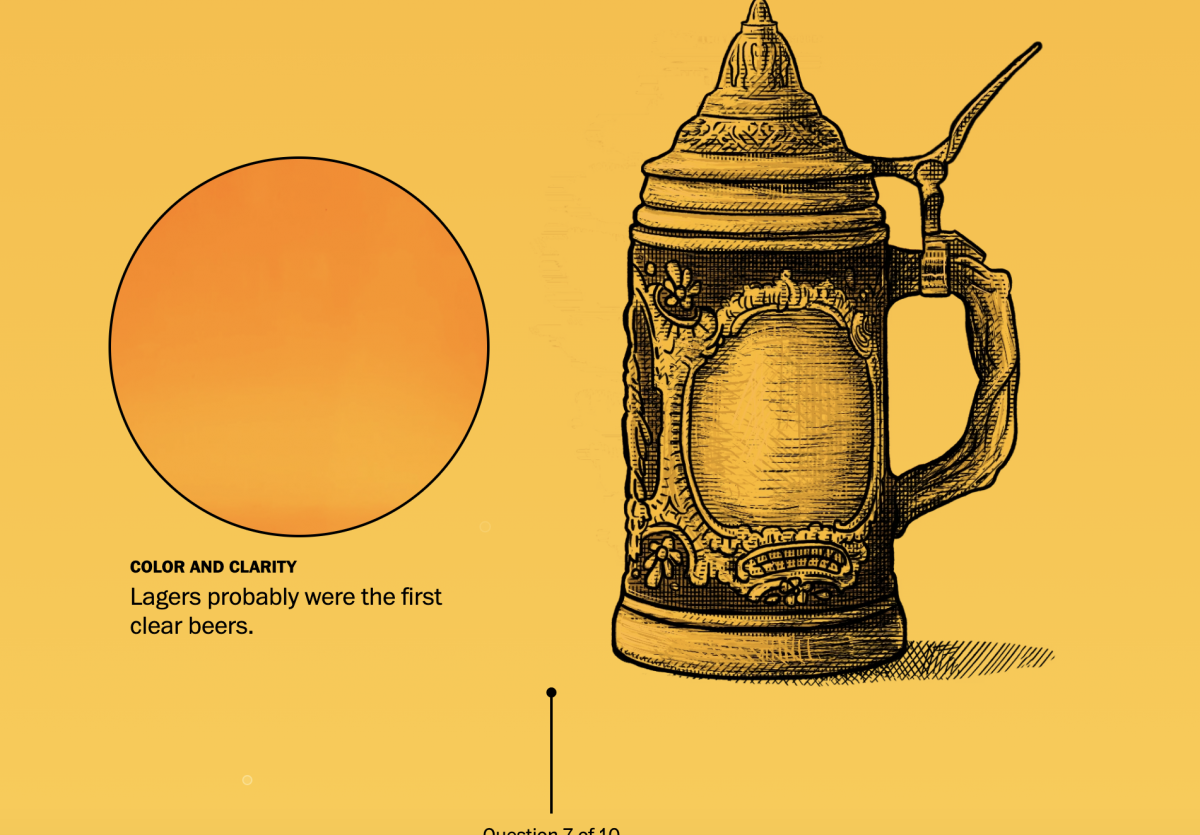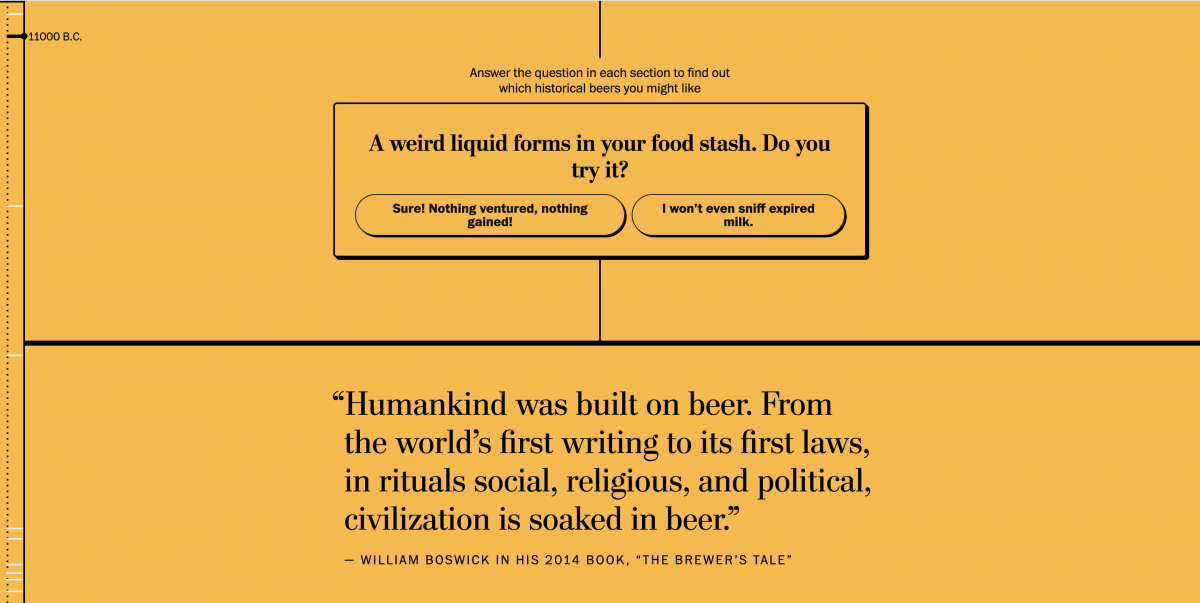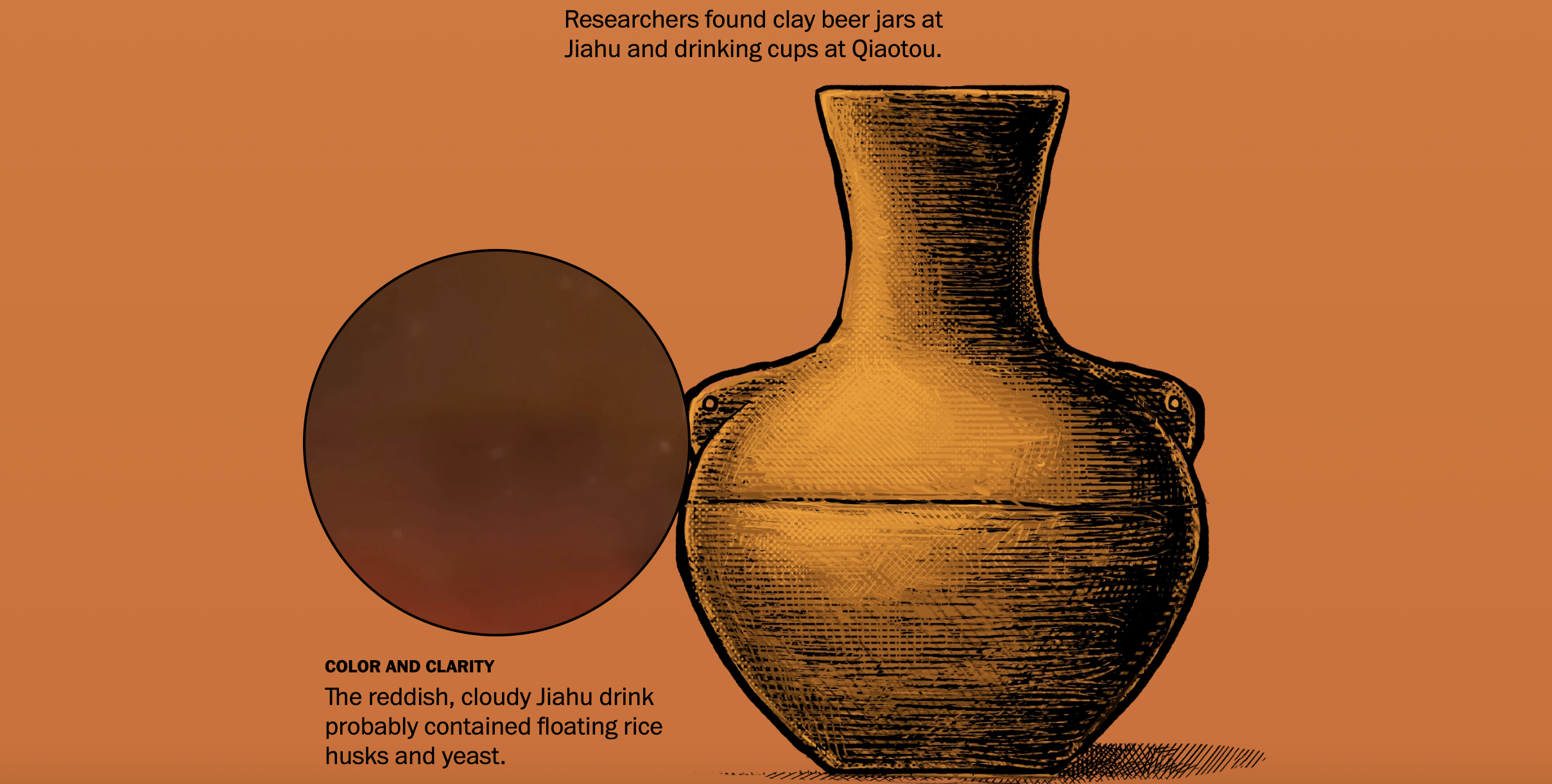Unraveling beer’s evolution with The Washington Post
In the effervescent tapestry of human history, few threads weave a tale as enduring and universal as that of beer. From the murky origins of Stone Age sludge to the meticulously crafted brews of today’s artisanal breweries, this amber elixir has been a companion to civilizations, a cornerstone of culture and a testament to the ingenuity of humankind.
In a dialogue with Bonnie Berkowitz, one of the journalists behind “Exploring the evolution of beer, from Stone Age sludge to craft brews,” readers embark on a journey through time, savoring the flavors and stories that have fermented over millennia.
Storybench discussed the intricacies and challenges Berkowitz and her team encountered while unraveling the story.
The following interview has been edited for length and clarity.
What inspired this interactive feature on beer’s history?
Berkowitz: My colleague, Manuel Canales, came up with this idea and he asked if I was interested. I definitely was because I thought it sounded like fun. He had originally come up with the idea of the vessels that people drink the beer out of, and that it is a visual way to tell the story. So, that was the original concept and then we had to figure out what we wanted to tell in addition to just: Here’s what they drink beer out of.
How did you source the historical information?
We had an initial list that was much longer, so we had to talk to beer historians. My initial source search, which is Googling around to see what has been written on the topic, yielded some names that a lot of other publications or scientific papers referenced. Patrick McGovern was by far the expert on ancient beers. So, I started with him. I read a couple of his books on the topic and he brought us up to speed.
My editor Nico and I went up to the Penn Museum where he works to talk to him, and we met another source there who is the person who does the Penn Museum’s ancient alcohol tour. That was really helpful for that era. We also talked to Theresa McCualla, who is the curator of the American Brewing History Initiative. She does a lot of the food exhibits there. She helped us with the modern information for the modern beer but also an overview of the topic.

What was the decision-making process behind the multimedia elements?
First of all, Manuel and Tim [Meko] are great designers and Leslie Shakira, who I work with, is a fantastic web designer. Once everybody got together, we figured out the story we wanted to tell and then people just started throwing ideas in. Manuel started wanting to do the vessel so we made sure so we had that information for him. Then, I don’t remember if it was him or Leslie who came up with the idea of pouring the beer for the intro. So, we all went down to the food lab to have the food photoshoot person do it and it was really fun.
We tried a bunch of different beers; they were supposed to sort of look like the ancient beers, according to what the experts have told us they would probably have looked like. We couldn’t be totally accurate and we said that in there, but no one can prove us wrong. We went through a few iterations of this. The nuts and bolts of the design were the same pretty much from the beginning because Manuel came to it from a design aspect, so he kind of sorted his head from the beginning when he pitched the idea.
Were there any challenges ensuring accuracy while making the content engaging?
It’s an interesting push-pull because you want to engage readers; otherwise, nobody’s going to read it. It can’t sound like an academic journal, or you will not get regular people. I wouldn’t read it, I wouldn’t want to write it.
It is a needle you have to thread. You have to be accurate above all else, but in the way you tell it, you don’t have to be dry. Especially on stories like this, they are a lot more fun. Some of the answers were just goofy but they weren’t inaccurate. We tried really hard for most of the little bits to convey some kind of information.

How did you envision the audience interacting with this feature?
We hope they liked it, we hope they read about it and then answered the questions. We had very good engagement. We hoped that by doing a semi-entertaining quiz and not waiting for the end to have it but putting it within each section, we hoped that would make people wonder what the next question says. That’s how we tried to lead people through it, and we hoped that they read the texts in between.
We got very good feedback from people who emailed saying they enjoyed it. People got in the comments arguing about different kinds of beer, what they liked, what they didn’t. We got pretty good feedback and quite a few people who saw it and engaged with it, which was nice.
Would you consider extending this format to other beverages or food items with rich histories?
We did get a lot of requests to do it for wine but I don’t know; never say never. It was really fun to report and write, I really enjoyed it. I’m a journalist and I just published a story about Formula 1 racing pit stops, and before that, it was something quick on the sizes of cities in the Gaza Strip. I mean, I do all kinds of different things, so I would say it’s unlikely that I would go back to this well really quickly. But never say never.
- Unraveling beer’s evolution with The Washington Post - January 2, 2024





